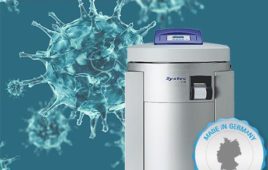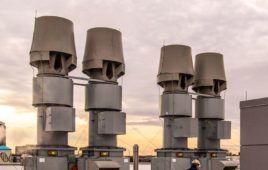Here is a good morning work routine: check the assembly processes, review the contamination control logs, glance at your email, and peruse the Federal Register. The Federal Register? If you think you have no time, or that theFederal Register is not your concern, think again.
Imminent updates to the “National Emission Standards for Hazardous Air Pollutants — Halogenated Solvent Cleaning” (Halogenated Solvents NESHAP) may impel process changes for many critical cleaning and manufacturing applications, with all of the inherent planning, equipment investment, and testing. Perchloroethylene (PCE), trichloroethylene (TCE), and methylene chloride (MC) are volatile; they can be utilized in the liquid and vapor phases and they leave negligible residue. However, they are Hazardous Air Pollutants (HAPs). The impending nationwide NESHAP addressesenvironmental and community safety concerns.
California EPA risk analysis is included in the Federal assessments; the latest EPA publication refers to methyl-ene chloride equivalents. This means that some HAPs are more hazardous than others. In California, TACs (Toxic Air Contaminants) each have specific risk factors related to acute, chronic, and cancer impacts. Particularly in Southern California, regulations for the use of PCE, TCE, or MC effectively mandate the use of airless or vacuum cleaning systems plus activated carbon capture of residual vapors. While it appears that the new NESHAP will not specify a particular control technology, there would be limits or caps on air emissions related to the risks associated with each chlorinated solvent under consideration.
The version published in the August 17, 2006 Federal Register keeps the original 1994 NESHAP in place, and is predicated on the assumption that all manufacturers are in compliance with the 1994 NESHAP. There was a public comment period and the rule was scheduled for December 15, 2006.
However, on December 14, there was an update, not a final rule, with an additional public comment period that ended January 29, 2007. The EPA asked for comments in specified areas, including narrow tube processing, continuous web cleaning processes, aerospace manufacturing and maintenance applications, large-scale military vehicle maintenance facilities, and facilities requiring multiple vapor degreasers. The EPA wanted to hear only about issues involving the ability to meet the new emissions limits, the cost impacts, and the time frame required.
The reason the EPA wanted to hear more is that people at some companies and trade groups spoke up. This means “speaking up” in writing, not griping over coffee. For example, there were concerns that vacuum systems would be needed and that these systems would not meet their needs. In our experience, airless or vacuum systems can be used successfully with certain applications, albeit with substantial capital investment, additional employee education, and ongoing process maintenance. You may find additional options. Whether you or your suppliers do industrial cleaning or critical cleaning, this scheduled NESHAP change may be an excellent opportunity to reassess cleaning process performance and to schedule capital outlays for equipment modification, replacement, and automation. It may be a good opportunity to take a dispassionate look at the entire cleaning and manufacturing process. With careful planning, you can minimize solvent emissions, save money, and still achieve an effective cleaningprocess.
To achieve the optimal regulations, it would seem advisable to include maximal input from practical, technical people. We think that forty-five days is a very narrow window to access public comments, especially during a time when plant closures are common. Even during the rest of the year, by the time the information gets out to most of the technical people, there is no time to respond.
Add a quick perusal of the Federal Register to your morning routine. Even if communicating with the government is not your cup of tea, and even if there are company restrictions, keep an eye on both impending Federal regulations and activities in California. Planning involves examining the process, the performance requirements, and the regulations. Early awareness of regulatory changes provides the leeway to develop effective alternative cleaning and contamination control processes and, therefore, to achieve a superior product. With a few clicks of the mouse, it is possible to access the Federal Register environmental documents, express your opinions and concerns, and/or plan for the next process change. You might want to bookmark the following link:
http://www.epa.gov/fedrgstr/EPA-AIR/index.html.
Barbara Kanegsberg is an independent consultant in critical and precision cleaning,surface preparation,and contamination control. She is the editor of Handbook for Critical Cleaning,CRC Press.Contact her at BFK Solutions LLC.,310-459-3614;[email protected]; www.bfksolutions.com.



